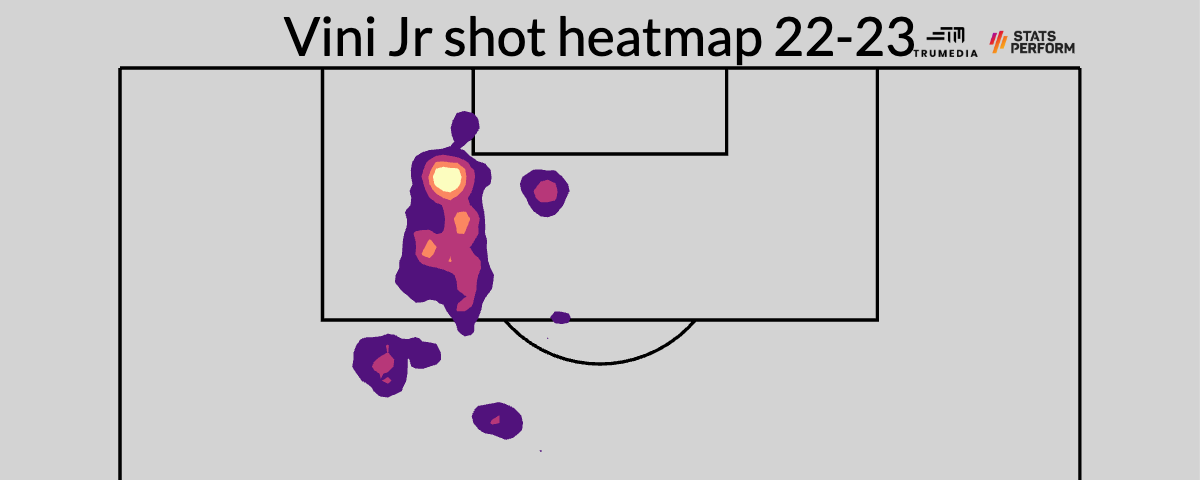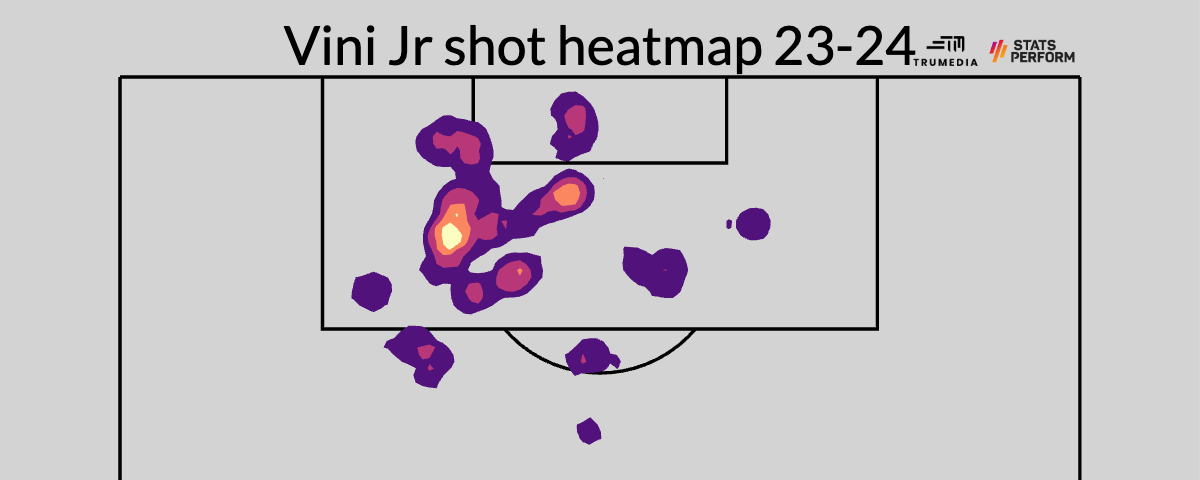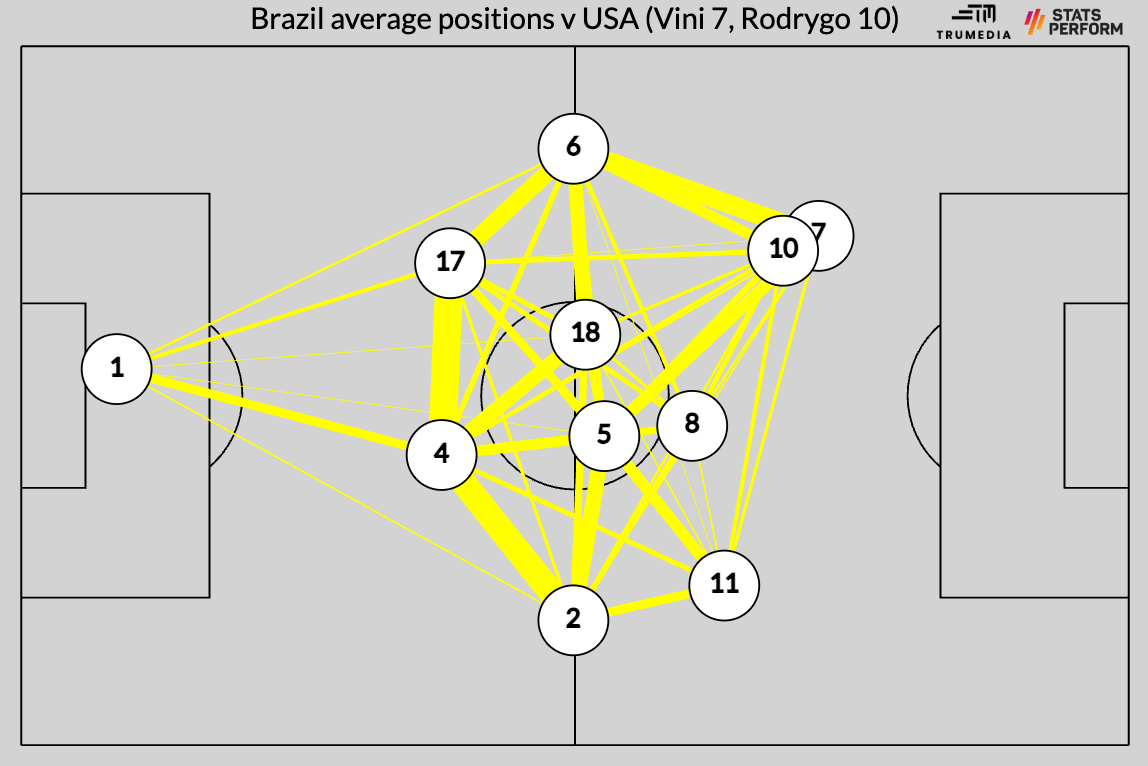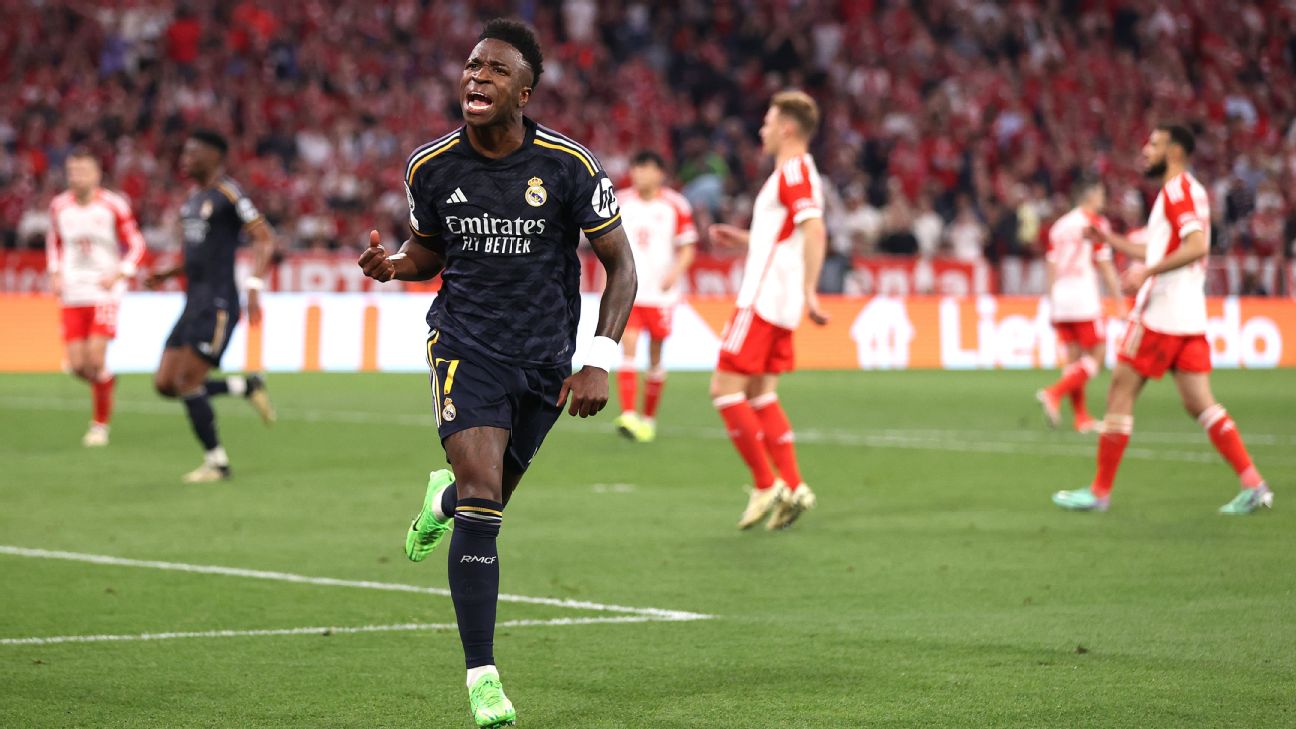How do you make a rock-solid case to win the Ballon d’Or? Try these three easy steps: win your domestic league, win the Champions League and lead your country to victory at a major tournament.
For Vinícius Júnior, it’s two out of three so far this year. The 23-year-old forward was key to Real Madrid’s 2023-24 LaLiga and Champions League double. He was the standout player in Madrid’s league title run-in, and then scored in their Champions League final win over Borussia Dortmund on June 1.
Now he has the chance to shine with Brazil at the Copa América, starting with their Group D opener against Costa Rica in Los Angeles on Monday. But unlike with his club, Vinícius is yet to fully graduate to “main man” status with his country.
At the 2021 Copa América — Vinícius’ first senior international tournament — he was used exclusively as a substitute, making four appearances off the bench. At the 2022 World Cup, the Brazil team revolved around Neymar, with Vinícius fitting in on the left in their disappointing run to the quarterfinals.
Since that World Cup failure, Brazil have struggled to find any rhythm, with three coaches overseeing a string of unconvincing results. Neymar misses out on the Copa América with a long-term ACL injury, and that means a star-shaped hole at the centre of the Brazil attack.
Vinícius is ready to step forward and fill that role.
Just as Brazil are now in the process of finding a new identity with new stars, Real Madrid faced a similar dilemma ahead of 2023-24: how to compensate for the absence of forward Karim Benzema, departed for the Saudi Pro League, without being able to count on Kylian Mbappé, whose arrival had to wait until this summer.
Part of coach Carlo Ancelotti’s answer was moving Jude Bellingham into a more advanced role, but the rest of it — especially in the second half of the season — relied on bringing Madrid and Brazil wingers Vinicius Júnior and Rodrygo infield to form an unorthodox, fluid front two.
The result was Vinícius’ best goal-scoring season for Real Madrid. He scored 24 goals in all competitions: 15 in LaLiga, six in the Champions League, and three in the Spanish Supercopa. That’s a total of four more goals than he scored in the previous season, 2022-23, despite being absent for much of September, November and December through injury.
Those 15 LaLiga goals in 2023-24 came from 1,872 minutes played. In 2022-23, Vinícius scored 10 LaLiga goals in 2,831 minutes. That’s scoring a goal, on average, every 124.8 minutes in 2023-24, compared to every 283.1 minutes the previous year.
Strikingly, the number of shots Vinícius took in each season was similar: 77 in 2022-23, and 78 in 2023-24. The difference was in the quality of those opportunities — impacted by the positions he was taking up on the pitch — and his finishing. His shot conversion rate in 2023-24 was 19.2%, up from 13% a season earlier.
A look at Vinícius’ shot heat maps in LaLiga for those two seasons demonstrates his change in role. He is still taking up some of the same positions as before, as you would expect from a forward who will always favour the left-hand side, but he is also often drifting into more dangerous, central positions.


A knock-on consequence has been a drop-off in Vinícius’ creativity, as he looks to get on the end of chances, rather than making them. Vinícius made almost half as many passes in the final third (386) in LaLiga in 2023-24 as he did in 2022-23 (730), albeit from almost 1,000 fewer minutes played. He created half as many chances (31 to 63) and registered fewer assists (5 to 9).
One of Vinícius’ most high-profile goals this season highlighted his new skillset. In the first leg of Real Madrid’s Champions League semifinal, away at Bayern Munich on April 30, Toni Kroos — another Ballon d’Or contender — picked up the ball, just inside the Bayern half. Vinícius wasn’t out wide, hugging the left touchline, as he might have been in previous seasons. Instead, he was waiting centrally, dropping deep to draw Bayern centre-back Kim Min-Jae out of position, before spinning and sprinting into the space left behind the defender, finishing past goalkeeper Manuel Neuer with his first touch.
None of the factors that combined for the goal — Vinícius’ central positioning, his quick-thinking movement (albeit a relatively straightforward, textbook centre-forward’s gambit) and his effortless finish — were hallmarks of his game in the past. Playing in a front two, alongside another versatile, intelligent forward in Rodrygo, has forced him to adapt and improve.
Vinícius’ best scoring run this season came with the five LaLiga goals he scored in two weeks in March against Valencia, Celta Vigo and Osasuna. The first three were close-range goals, taken first time, with one touch, inside the six-yard box. The other two were clinical finishes, one-on-one with the goalkeeper. These were the goals of a centre-forward.
Sebastian Salazar and Herculez Gomez make their picks for dark horses at Copa America 2024.
The question now is whether Vinícius will be given the opportunity to showcase his new, all-round game with Brazil. The good news for him is that there is no Neymar to take the spotlight at this Copa América and insist on having the attack built around him. There is also no Richarlison, another frequent centre-forward selection for Brazil in recent years.
Instead, the competition for places in attack comes from club colleague Rodrygo, Madrid-bound teenage sensation Endrick — who is just 17 — as well as Arsenal’s Gabriel Martinelli, Girona’s Savinho and Porto’s Evanilson. All are talented, but none are likely to obscure Vinícius, at least right now.
Even Brazil’s disastrous string of results in 2026 World Cup qualifying — with just two wins in six games so far — and the consequent arrival of a new coach in Dorival Júnior, present Vinícius with an opportunity. This is a team in need of a new direction, without an obvious leader in attack.
Sources told ESPN that Brazil’s coaching staff have been encouraged and impressed by Vinícius’ development with Real Madrid over the last year. They now see the possibility to pick him at centre-forward, with Rodrygo moving out wide.
Brazil’s four friendlies in 2024 have found Dorival Júnior in the process of searching for his team’s preferred attacking shape. In the 1-0 win over England at Wembley on March 23, Vinícius started on the left of a front three with Rodrygo and Raphinha, before Endrick won the game off the bench. In the 3-3 draw with Spain at Madrid’s Santiago Bernabéu three days later, he picked the same trio, with Endrick again scoring as a substitute.

This month, Brazil started with a much-changed reserve team in their 3-2 win over Mexico in Texas, with subs Vinícius and Endrick combining for an added-time winner. And in the 1-1 draw with the United States on June 12, a similar starting 11 to the one which might kick off against Costa Rica included Vinícius at centre-forward, with Rodrygo playing off him.
Vinícius had six shots against the U.S. — three early in the match and three late on, the best of them in added time — but was unable to beat goalkeeper Matt Turner. He has not scored for Brazil since last June, a drought he will be desperate to end at this tournament.
Some influential voices argue that Vinícius’ 2023-24 season has already brought enough to earn the Ballon d’Or.
Neymar says Vinícius deserves it for his club achievements. So do two more Brazil national team legends, Ronaldo Nazario and Rivaldo. Madrid coach Carlo Ancelotti thinks there’s a case to be made, if Vinícius delivers at the Copa América. Even club teammate Jude Bellingham — a Ballon d’Or rival if England excel at Euro 2024 — joked that the two of them can share the prize, if they must.
But in a 2024 with two major summer tournaments, it’s hard to imagine a Ballon d’Or winner without a defining moment at international level.
If Vinícius wants to take the next step and have his on-field greatness recognized beyond LaLiga and Real Madrid, he needs to take a leading role for Brazil. A vacancy is there to be filled.
Vinícius hasn’t just played well for Madrid. He has reinvented himself from an electric, but sometimes predictable, left-winger into a deadly, all-purpose forward, in the conversation for best in the world status. If he completes that transformation at the Copa América, his Ballon d’Or case might be impossible to ignore.
Reporting from Gustavo Hofman contributed to this article.



